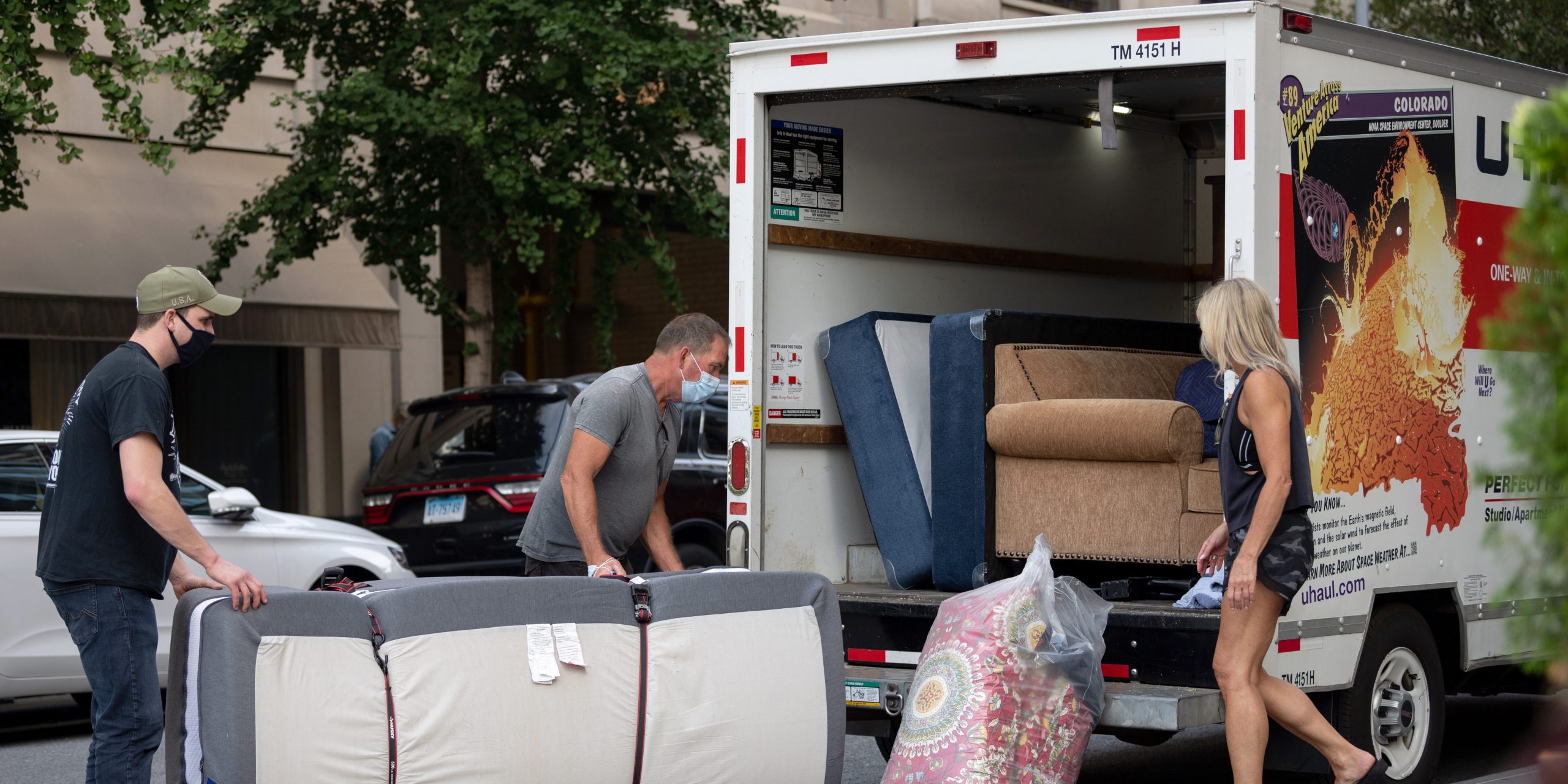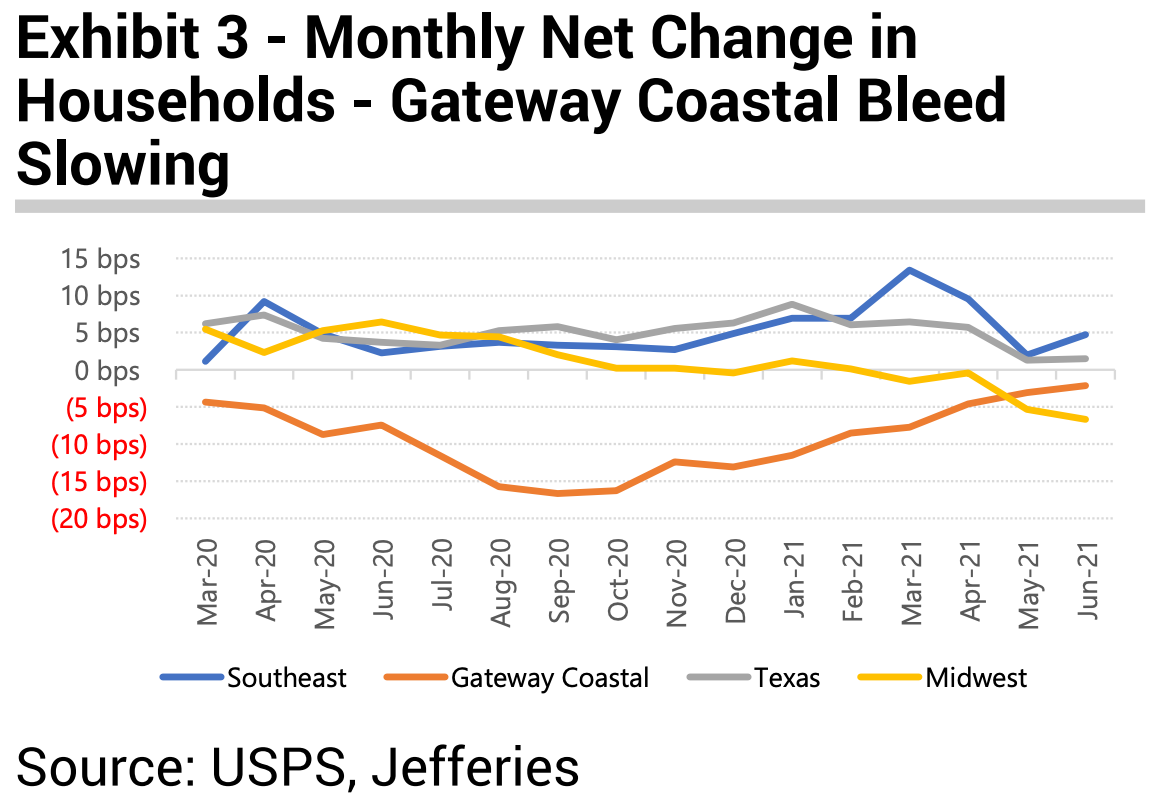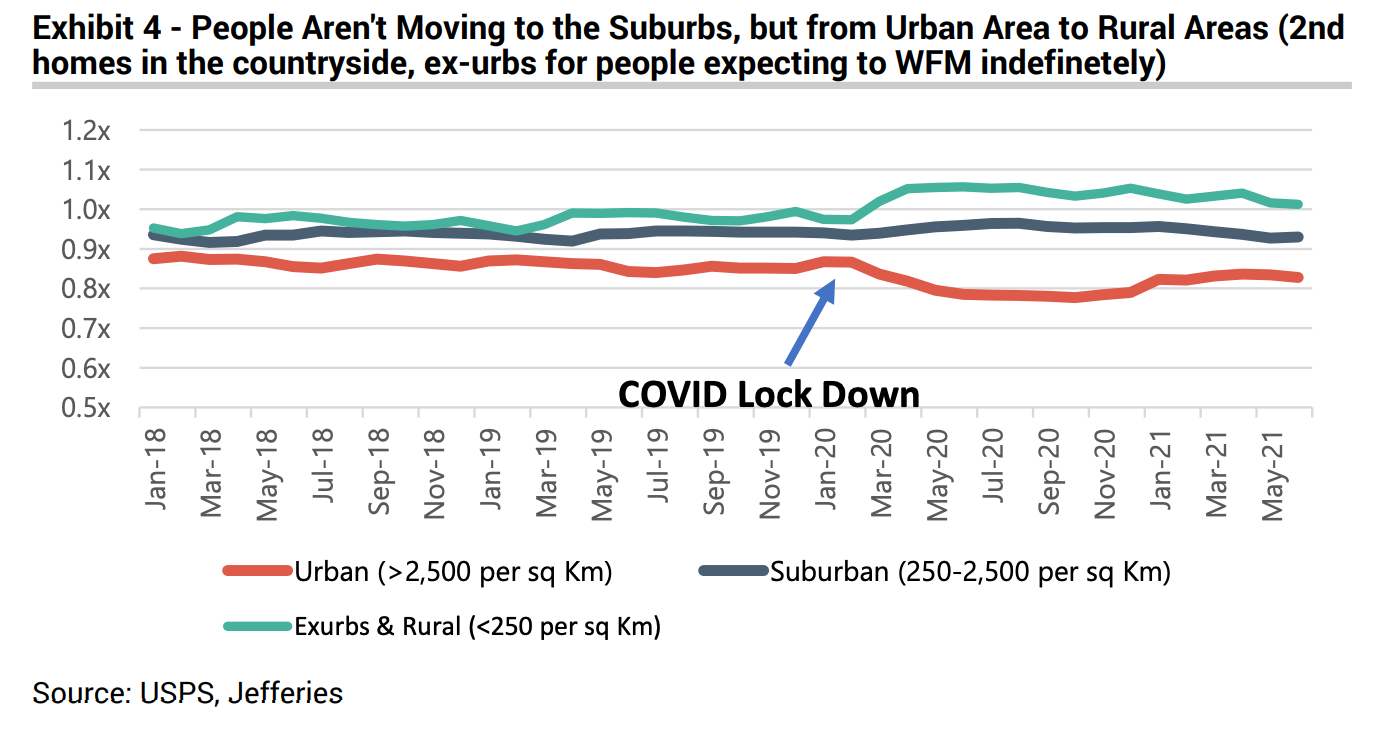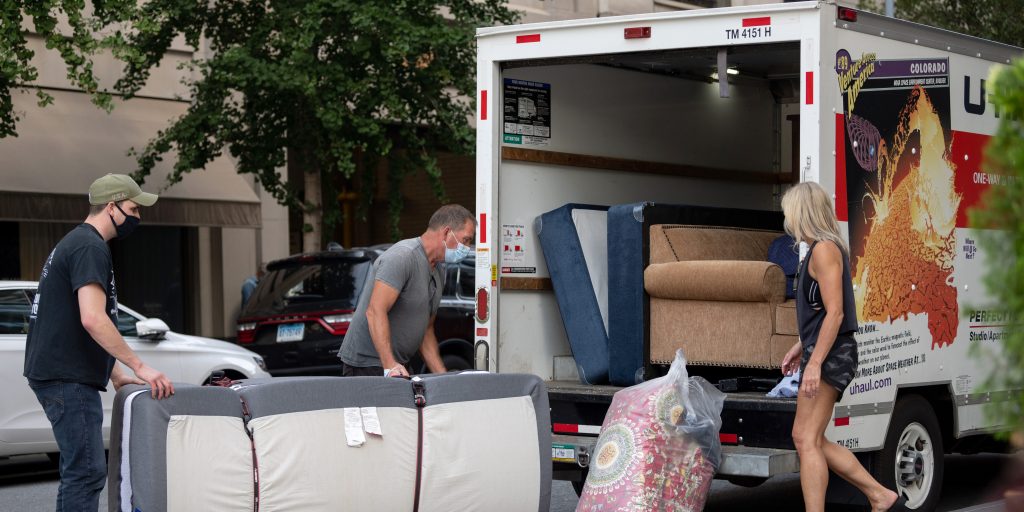
Alexi Rosenfeld/Getty Imates
- People are flocking back to New York and staying away from Silicon Valley, Jefferies analysts said.
- USPS mail-forwarding data shows New York's occupancy growing with finance giants reopening offices.
- Big Tech's delayed office return is likely driving population declines in the Bay Area, Jefferies said.
- See more stories on Insider's business page.
The second stage of pandemic-era migration has begun in the US.
The pandemic and related lockdowns sparked a mass exodus from densely populated cities, as millions of Americans moved throughout the crisis, with many fleeing metropolitan areas. The vaccine-led reopening is far along enough now that some of these trends are reversing course.
Mail forwarding data from USPS suggests Americans are returning to major East Coast cities, Jefferies analysts led by Jonathan Petersen said in a note this week. Manhattan saw 4.3% of households move out during the pandemic but regained 0.31% of occupancy through May and June. That sum should increase, the team said, as "all indications point to further acceleration into July."
The moves could be linked to financial services giants encouraging employees to return to offices, Jefferies said. The messaging sparked "a scramble for apartments" as those who left at the start of the pandemic flocked back to New York.
Boston has similarly seen move-ins accelerate into the summer, the note said, while that city's population is lower than during the period just before the pandemic.

Jefferies
Northern California, on the other hand, is struggling to rebound. Occupancy change was flat in San Francisco in May and June, Jefferies said, and the total population remains about 3.4% lower than that seen in March 2020. Declines in Silicon Valley held at roughly 0.2% each month. The lack of a population surge could be explained by tech companies pushing back their return-to-work dates into the second half of the year, the analysts said.
Sun Belt cities such as Raleigh, Jacksonville, Charlotte, and Austin remain the clear winners of the pandemic moving cycle. Strong population growth continued through the second quarter, and many of these cities have seen occupancy rise more than 1% through the pandemic.
Every market that enjoyed net in-migration in the second quarter was either in Texas or the Southeast, Jefferies said. Four of the top five fastest-growing cities were in the major Florida hubs of Orlando, Miami, Jacksonville, and Tampa, the firm added.

Jefferies
USPS data also suggests the city-to-suburbs exodus wasn't nearly as large as early narratives suggested.
Rural areas benefitted most from lockdown-related migration, with population growth shooting higher in early 2020 and only falling slightly over the following year. And while urban populations have started to rebound as the US reopens, suburban occupancy has been essentially unchanged.
The city-to-rural shift is likely powered by Americans moving to second homes in the countryside, Jefferies said. Those expecting to telecommute indefinitely also likely played a role in the population shift, the team added. That means the urban comeback could be even bigger in the months to come, especially on the east coast.

